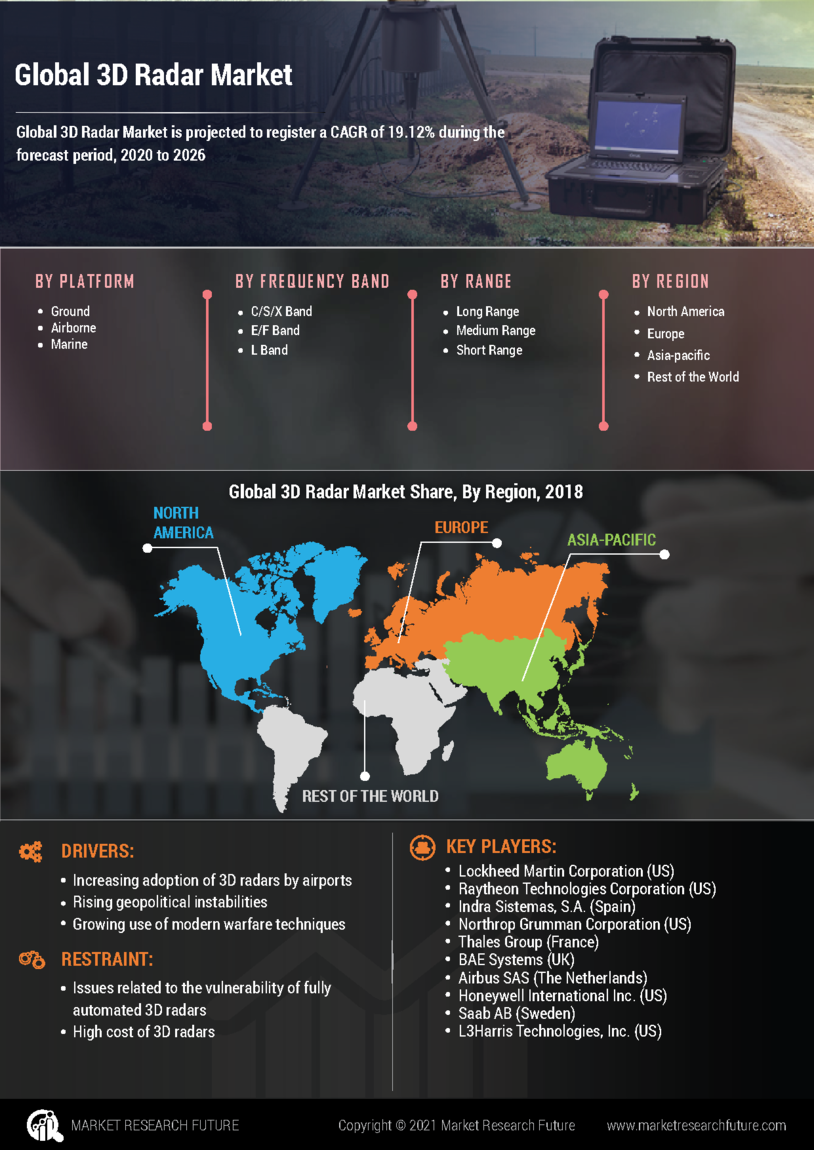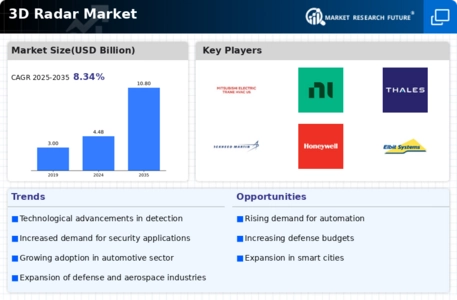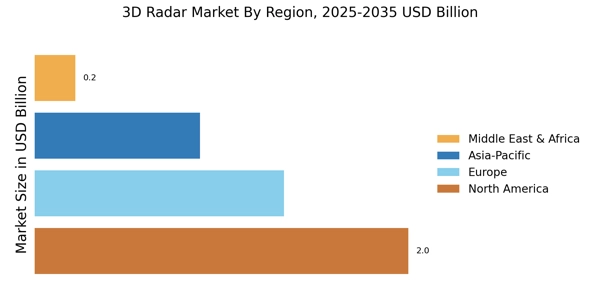Advancements in Radar Technology
The 3D Radar Market is significantly influenced by ongoing advancements in radar technology. Innovations such as improved signal processing algorithms and miniaturization of radar components are enhancing the performance and applicability of 3D radar systems. These technological improvements are enabling higher resolution imaging and better target detection capabilities, which are crucial for various applications, including defense, automotive, and industrial sectors. As a result, manufacturers are increasingly focusing on research and development to create more sophisticated radar solutions. Market analysis indicates that the investment in radar technology is expected to grow, with a projected increase in R&D spending by key players in the industry. This focus on innovation is likely to drive the expansion of the 3D radar market, making it more competitive and diverse.
Emerging Applications in Healthcare
The 3D Radar Market is beginning to explore emerging applications within the healthcare sector. The potential for 3D radar technology to assist in medical imaging and diagnostics is garnering attention from researchers and healthcare professionals alike. By providing high-resolution imaging capabilities, 3D radar systems could enhance the accuracy of non-invasive procedures and improve patient outcomes. Although still in the early stages of development, initial studies suggest that the integration of 3D radar in healthcare could revolutionize certain diagnostic processes. As the healthcare industry continues to seek innovative solutions to improve patient care, the 3D radar market may see a gradual but steady increase in demand, reflecting a growing recognition of its potential benefits.
Rising Demand for Surveillance and Security
The 3D Radar Market is experiencing a surge in demand for surveillance and security applications. This is largely attributed to increasing concerns regarding national security and public safety. Governments and private entities are investing heavily in advanced radar systems to monitor borders, critical infrastructure, and urban areas. The ability of 3D radar to provide detailed imaging and tracking capabilities makes it an invaluable tool for law enforcement and military operations. Recent data suggests that the security segment of the 3D radar market is poised for significant growth, with projections indicating a compound annual growth rate of over 10% in the coming years. This trend underscores the critical role that 3D radar technology plays in enhancing security measures across various sectors.
Increasing Adoption in Transportation Sector
The 3D Radar Market is witnessing a notable increase in adoption within the transportation sector. This trend is primarily driven by the need for enhanced safety and navigation systems in vehicles. As autonomous vehicles gain traction, the demand for advanced radar systems that provide accurate real-time data is escalating. The integration of 3D radar technology in transportation is projected to enhance situational awareness, thereby reducing accidents and improving traffic management. According to recent estimates, the transportation segment is expected to account for a substantial share of the 3D radar market, potentially reaching a valuation of several billion dollars by 2026. This growth reflects a broader shift towards smart transportation solutions, where 3D radar plays a pivotal role in ensuring safety and efficiency.
Growing Applications in Industrial Automation
The 3D Radar Market is expanding its footprint in the realm of industrial automation. As industries strive for greater efficiency and productivity, the integration of 3D radar systems into manufacturing processes is becoming more prevalent. These systems facilitate precise monitoring of equipment and materials, enabling predictive maintenance and reducing downtime. The ability to accurately measure distances and detect objects in real-time is particularly beneficial in automated environments. Recent studies indicate that the industrial automation segment is expected to witness a robust growth trajectory, with 3D radar technology playing a crucial role in optimizing operations. This trend reflects a broader movement towards smart factories, where advanced technologies are leveraged to enhance operational efficiency.


















Leave a Comment